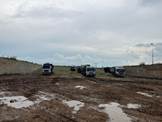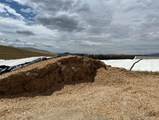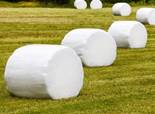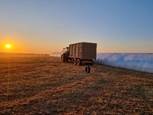The Silage Dilemma! Is it worth the effort and investment?
Silage is an essential component of livestock farming in South Africa, providing a reliable and cost-effective feed source. This is a short explanation of the benefits of silage, including its role in maintaining feed quality, reducing costs, and ensuring year-round feed availability. Additionally, we examine silage production methods and the use of inoculants to optimize fermentation.
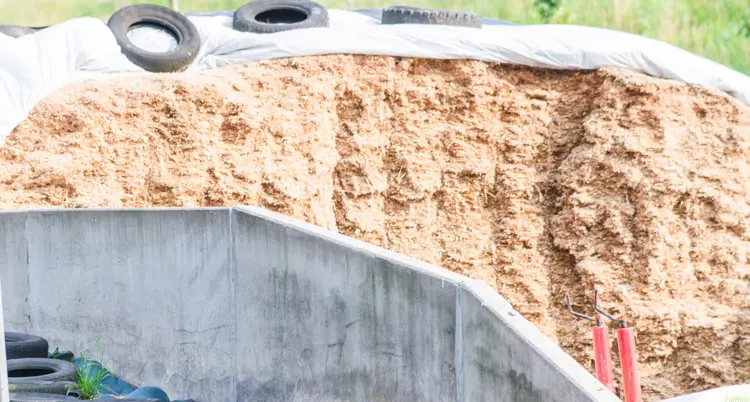
Silage, whether made from grass, sorghum, maize, or other crops, plays a crucial role in livestock nutrition. Farmers or Silage producers are enabled to preserve and secure a feed supply throughout the year using the following factors:
- An anaerobic environment.
- Lactic and Acetic acids, which are produced by lactic acid bacteria fermenting the sugars from the forage.
- A drop in pH, which is a result of the acids produced.
Silage is of great value to the farmers, considering its economic and nutritional benefits. Silage is created by compacting the forage/crop to remove oxygen and then sealing it in airtight conditions. Proper compaction, minimal ground contamination, and effective protection against oxygen will ensure optimal fermentation, which will result in good quality silage. Successful fermentation will preserve the dry matter content while maintaining nutritional value and palatability.
The economic and nutritional benefits:
The ensiling process requires effort but offers long-term benefits, including:
- Preserving forage and its nutrients during wet seasons for use in dry periods or during feed scarcity.
- Forages or crops, if ensiled successfully, can be stored over very long periods.
- Reduction in input costs compared to purchasing commercial feed or hay.
- Utilization of damaged crops (e.g., due to drought or hail) for silage production.
- Cost-effective feed alternative that supports livestock wellbeing and productivity.
- Less wilting time in comparison to making bales (grass silage) – less risk of inclement weather damaging forages.
- Crops are ensiled at a high moisture content, which means the crops can be ensiled much earlier, reducing the risk of inclement weather.
- Good quality silage will provide animals with nutritious, highly digestible and palatable feed to be used in various feeding strategies.
When, Why and How?
When, Why and How to ensile is summed up in five C’s:
|
5 C’s |
When |
How |
|
Content of Dry Matter |
· If the DM content increases, it complicates the compaction of the forage. · Higher DM content increases the chance of moulds forming, which increases the myco-toxin risks. · Drier forages will have a darker colour when ensiled and have the smell of tobac- co, which tells us that protein degradation already occurred. · Lower DM silage will lose a lot of nutrients through leaching.
|
· The Dry Matter of forage can be determined by the microwave method. · Spread 100g of the forage evenly on a paper plate. Remember to deduct the weight of the paper plate. · Heat this sample for ±4min. · After about 4 minutes, you can weigh the sam- ple and heat the sample again for 90 seconds. Repeat this step until the sample's weight is constant. · That constant weight indicates the amount of Dry Matter in your sample. · Milk line on maize crops can also be used as an indication. The milk line should be 2/3 away from the kernel.
|
|
Chop Length |
· If you run into a situation where the DM content of your forage is already above 35%, shorter chop lengths will help with better compaction.
|
· The chop length will be determined and manipulated by the machine used to cut the silage. |
|
Compaction |
· This step is considered the most important during the ensiling process. · It will be beneficial to have your most ex- perienced driver do the compaction on the silage bunker. · Compaction starts as soon as the material is offloaded at the bunker/surface. · With silage bags and bales, this process is done by the machine that is filling the bag of creating the bales. |
· The rule of thumb is that for the amount of for- age (ton) dumped into the bunker every hour, you need 0.4 times the weight on top of the bunker compacting. This can be tractors or any heavy machinery. · Every inch of the bunker should have tyre marks. · Operators must not turn on top of the bunker and rather drive in straight lines when compact- ing. · Material should be spread out in 200mm to 300mm compaction layers while compacting. Thicker layers will result in oxygen not being successfully removed.
|
|
Covering the Silage |
· Silage should be covered as soon as possible to prevent excessive exposure to oxygen for a too long period. · Covering the silage sooner would help with the migration of oxygen throughout the silage bunker or pile. · Covered silage is protected against any weather changes. · The faster the silage is covered, the fewer losses the producer will have. |
· Silage bunkers should be airtight to prevent oxygen from entering and spreading through- out the bunker. · Any type of weight can be used to keep the cover sealed as long as there is enough of these weights. · Where the covers overlap, it is wise to overlap the covers up to 2m with each other to increase the chance of keeping oxygen out. |
|
5 C’s |
When |
How |
|
Care for the Silage |
· Remember with silage, Oxygen is our ene- my! |
· The silage face should be cut square to keep the surface area in contact with oxygen to a minimum. · Cut off the daily requirement silage and close the face of the bunker as quickly as possible. |
|
Procedure |
Pros |
Cons |
When to use |
|
Bunker
|
· Reduced spoilage in the top layer. · Easy to fill a bunker. · Feed out is easier. |
· A greater cost of investment involved in silo bunkers than drive over piles. |
· Silage makes up a large portion of your animal’s diet. · Large quantity of animals. · Large requirement for silage. |
|
Drive over Pile
|
· Lower investment. · Can be done on any stable and clean floor. · Offers more flexibility to the producer. |
· A larger space is required. · A larger amount of cover plastic and weights are needed than the bunker. |
· The producer has access to heavy machinery for com- pacting. · Space is not an issue. · It can also be used where there is a large requirement for silage every day. |
|
Silage Bales
|
· Portability. · Reduced Waste. · Higher Dry Matter (DM) Content. · Versatility. |
· Large investment for com- pacting machines. · When using contractors, you run the risk of waiting, which may influence your forage DM content. |
· If you need portability of your silage. · Animals are scattered over the farm or between farms. · Do not have space for drive over piles. |
|
Silage Bags
|
· Small feed out face to manage. · Smaller surface area in contact with oxygen and should have de- creased spoilage. |
· Rips in the bag may migrate along large parts of the bag. · Lower compaction rate. · A lot of variation from the start to the end of the bag because the bag is filled ac- cording to how the field is cut. |
· Lack of space. · Lack of heavy machinery for compaction. · Lack of workers to help dur- ing the ensiling process. |
Silage inoculants and fermentation efficiency
Challenges faced with ensiling organic material is the loss of dry matter and nutritional value of the silage through improper fermentation. This phenomenon causes the growth of unwanted moulds and yeasts, which consume nutrients and produce myco-toxins which have detrimental effects on the health and production of the animals. Silage fermentation can occur naturally under anaerobic conditions due to native bacteria present on crops. However, natural fermentation is inconsistent as the quantity and efficiency of native lactic acid bacteria vary. To improve fermentation control, farmers can use silage inoculants with known colony-forming units (CFUs) and selected bacterial strains to steer the fermentation process in a favourable direction.
Inoculants enhance:
- Fermentation efficiency through rapidly lowering pH and establishing a stable environment.
- Preservation of sugars, proteins, and dry matter content.
- Production of beneficial acids (e.g., lactic and acetic acids) that improve silage stability and quality.
- Reduction of spoilage organisms.
- Increase the stability of silage with feed out (colder for longer).

This is an example of very wet silage of which the quality will be not good. High DM losses and nutrients leached out.
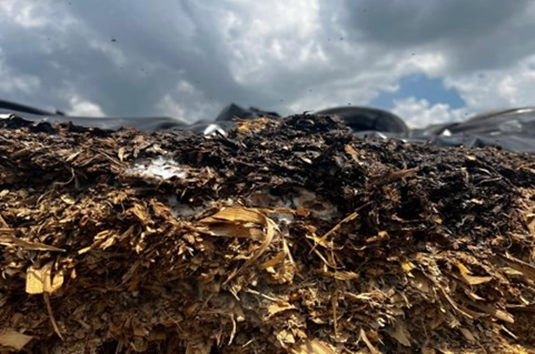
This is an example of poor compaction while ensiling or the cover of this silage was compromised in some way. A lot of visible spoilage in this silage.
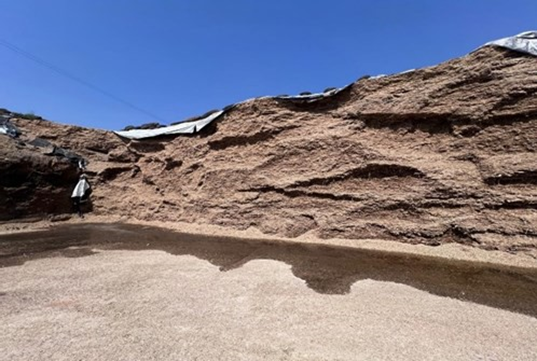
This a good example of a very neat silage bunker. The face of this pile is kept clean and tidy, no loose silage on the surface and no soil contamination.
The face is also cut off relatively square with minimal surface area for oxygen to get in contact with the silage.
Silage as a Component of Ruminant Diets
Forages provide animals with dietary fibre, which is essential for the normal functioning of the rumen. High-quality silage provides livestock with essential nutrients, including energy, protein, and fibre. Proper fermentation improves digestibility and palatability, increasing feed intake and nutrient absorption. Additionally, silage is a valuable component that is used in Total Mixed Rations (TMR), especially with dairies and feedlots, which would be considered intensive systems. Silage contributes to balanced, cost-effective and efficient feeding strategies for any system.
Conclusion
Silage is a valuable investment for livestock farmers, offering economic and nutritional advantages while ensuring feed security. With proper production techniques and the incorporation of helpful tools like bacterial inoculants, farmers can maximize the benefits of ensiled forages, reduce the uncertainty of silage-making and increase the return on investment/ effort of silage production. The effort involved in making silage is well justified by its long-term contributions to livestock wellbeing, increased productions and farm sustainability.
Should you require more information relating to of Silage is worth the effort and investment please contact your nearest De Heus Technical Specialist - https://www.deheus.co.za/meet-our-team/.

